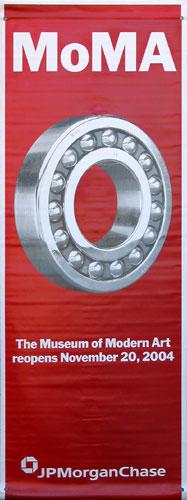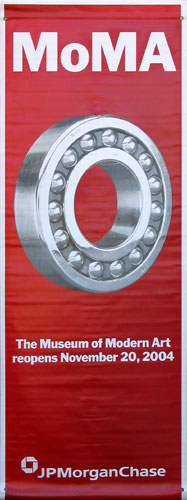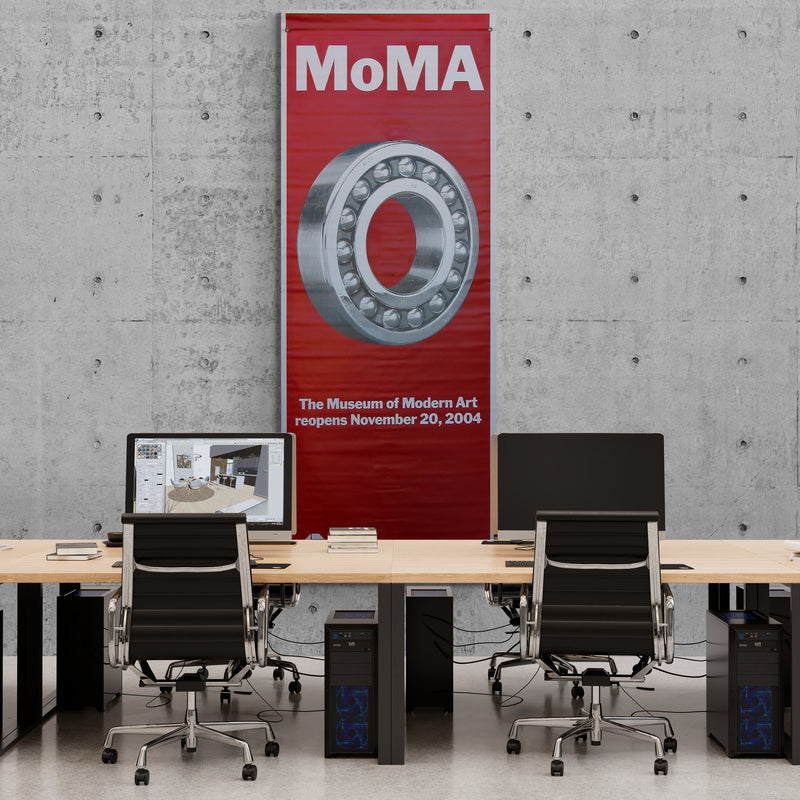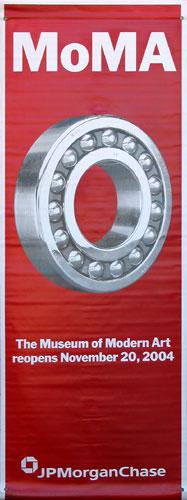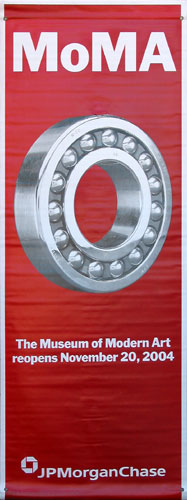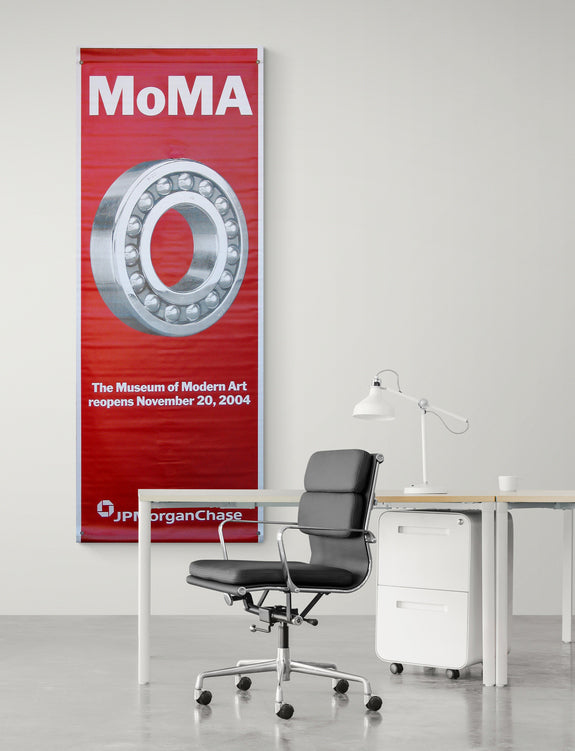BetterWall
Swedish Design, Ball-Bearing
Swedish Design, Ball-Bearing
Couldn't load pickup availability
Share
Original Limited Edition: 21
Exhibition: The Museum of Modern Art Grand Reopening
Material: Printed vinyl
Dimensions: 35" x 96" (88.9cm x 243.84cm)
Hanging Hardware Included
Summary
A ball-bearing can do many things. It can keep your lazy susan revolving. It can help your tires turn. Taken out of context and displayed at The Museum of Modern Art in New York, a well-designed bearing can even become art. We have 21 banners featuring the world's first self-aligning ball-bearing by Swedish engineer Sven Wingquist.
Description
In the 1920s and 1930s, the so-called "machine age", industrial designers were becoming more and more interested in the intersection of form and function. Consumers were also more aware of design, and sought products that looked good and worked well. Swedish designer, Sven Wingquist (1876-1953) had adopted this philosophy decades earlier, even taking it so far as to create machine parts that functioned at a high level while being pleasing to the eye.
The ball bearing shown on the banner was designed by Wingquist in 1907, and entered The Museum of Modern Art's design collection in 1934. It was one of the first works in that collection. It remains today one of the best examples of innovative industrial design that leads to increased performance as well as pleasing aesthetics. This steel ball bearing is composed of a double layer of balls in a race, or grooved channel. This type of bearing was a newer design that offered better performance and greater efficiency than the usual sliding bearings. The design allowed the bearing to self-align so it could adjust to some misalignment during functioning without disturbing the bearing's performance.
While the mechanical and functional improvements of this bearing over other bearings of its day are impressive, the most striking element is its simple beauty. This dramatic banner shows the chrome-plated steel bearing to great effect, it's round silver form enlarged and floating on the deep red background. It becomes an art object more than a functional machine part, with the shiny, silver orbs evenly distributed around the steel ring. The image of the ball bearing is greatly enlarged from its original size of 8 1/2" in diameter to over 2 feet in diameter. Enlarged and seen out of context, the bearing could easily be perceived as a sculpture or piece of jewelry.
Both sides of this banner are identical. Above the image in white text are the museum's initials "MoMA" and below the image is additional white text that reads"The Museum of Modern Art/reopens November 20, 2004". The logo and name of the sponsor "JP MorganChase" is included at the bottom of the banner. The whole of the banner is a deep red color surrounded by a white line that frames the banner and makes it visually float on the wall. Other banners promoting the reopening feature de Chirico's Song of Love and Cezanne's The Bather
Provenance
These banners were displayed around Manhattan to promote The Museum of Modern Art's grand reopening in New York City in 2004. The museum's expansion was designed by Japanese architect Yoshio Taniguchi who was selected after an extensive search, and whose design doubled the museum's size to 630,000 square feet.
